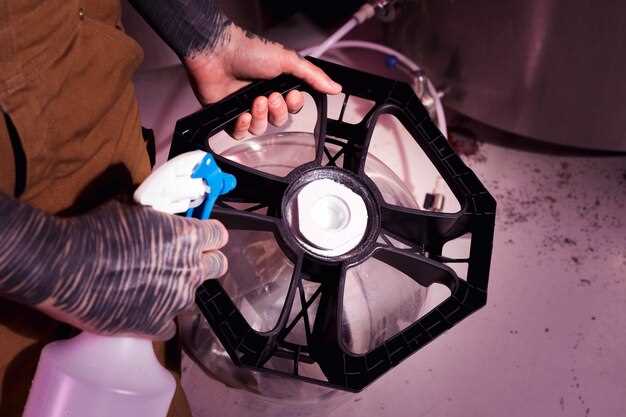
Turbocharged vehicles are renowned for their ability to deliver impressive performance and enhanced fuel efficiency. However, even the most advanced systems can encounter issues, with vacuum leaks being one of the most common culprits affecting turbocharged imports. These leaks can lead to a variety of performance problems, including poor acceleration, decreased fuel economy, and increased emissions. Identifying and rectifying vacuum leaks is crucial for maintaining optimal engine performance.
Understanding the Symptoms of vacuum leaks is the first step in diagnosing the issue. Symptoms may include an irregular idle, a decrease in turbo boost, and audible hissing sounds coming from the engine compartment. These indicators are often accompanied by check engine lights and reduced power delivery, making it essential to address the problem promptly. An understanding of the vehicle’s boost pressure and normal operating parameters can provide valuable insights into the extent of the leak.
To effectively detect vacuum leaks, several methods can be employed. Visual inspections, using smoke machines, or listening for unusual noises can all aid in pinpointing the source of the leak. Each technique has its advantages, but combining multiple approaches often yields the most accurate results. Once identified, repairing the leak can restore engine performance and ensure the longevity of the turbo system.
Common Symptoms Indicating a Vacuum Leak in Turbocharged Vehicles

Turbocharged vehicles are known for their performance, but they can be sensitive to vacuum leaks. A vacuum leak occurs when air enters the engine’s intake system unintentionally, disrupting the air-fuel mixture. Identifying these leaks early can prevent engine inefficiency and potential damage. Here are some common symptoms to look for:
One of the primary indicators of a vacuum leak is an irregular or unstable idle. If the engine fluctuates in RPMs while idling, this could signal that extra air is disrupting the normal mixture of fuel and air, causing improper combustion.
Another symptom is reduced engine performance. Drivers may notice a lack of acceleration or power, particularly during acceleration phases. This can be attributed to an imbalanced air-fuel mixture, leading to poor combustion efficiency.
Increased fuel consumption is also a telltale sign. When there is a vacuum leak, the engine may compensate by using more fuel to maintain power, resulting in lower miles per gallon.
Additionally, the check engine light commonly illuminates on the dashboard of turbocharged vehicles due to issues related to vacuum leaks. Engine control units (ECUs) monitor air-fuel ratios, and any deviations from preset parameters can trigger diagnostic codes.
Popping or backfiring sounds during acceleration or deceleration may indicate a vacuum leak. These sounds suggest that unburned fuel is igniting in the exhaust system due to an imbalance in the air-fuel mixture caused by excess air.
Finally, a hissing or whistling noise can often be heard near the engine compartment. This sound usually indicates air escaping from a crack or hole in the intake system, making it an audible sign of a potential vacuum leak.
Monitoring these symptoms closely and addressing any suspected vacuum leaks promptly is vital for maintaining the performance and efficiency of turbocharged vehicles.
Step-by-Step Guide to Conducting a Vacuum Leak Test
Performing a vacuum leak test is essential for identifying air leaks in the intake system of turbocharged imports. Follow these steps to conduct an effective test:
Step 1: Gather Your Tools
You will need a smoke machine, a pressure gauge, a few basic hand tools (screwdriver, wrench, etc.), and safety gear such as gloves and goggles.
Step 2: Prepare the Vehicle
Ensure the engine is cool and disconnect the battery to avoid any electrical issues during testing. Remove any necessary engine covers to access the intake manifold and associated components.
Step 3: Close Off the Intake System
Using a rubber plug or duct tape, seal off the intake air pipe at the turbocharger inlet. This step prevents air from escaping during the test.
Step 4: Introduce Smoke
Connect the smoke machine to the intake system. Turn on the machine and allow smoke to fill the intake components. Monitor the system closely for any visible smoke escaping.
Step 5: Inspect For Leaks
Carefully observe all joints, hoses, and gaskets while smoke is being introduced. Pay special attention to areas such as the throttle body, intake manifold, and vacuum lines. Any visible smoke indicates a vacuum leak.
Step 6: Use Pressure Gauge
If possible, use a pressure gauge to apply a slight amount of pressure to the intake system. This method can help reveal leaks that might not be visible with smoke alone.
Step 7: Document and Address Leaks
Note all detected leaks, categorize them by severity, and prioritize repairs. Common fixes include replacing damaged hoses, tightening loose clamps, or replacing faulty gaskets.
Step 8: Retest the System
After repairs are made, perform the vacuum leak test again to ensure all leaks have been resolved. Repeat this process until the system is free of leaks.
By following these steps, you can effectively identify and rectify vacuum leaks in turbocharged imports, ensuring optimal performance and efficiency.
Tools and Techniques for Diagnosing and Repairing Vacuum Leaks
Diagnosing and repairing vacuum leaks in turbocharged imports require a combination of specialized tools and effective techniques. Understanding the right approach ensures accurate identification of leaks and efficient repairs.
1. Smoke Machine: A smoke machine is one of the most effective tools for diagnosing vacuum leaks. It works by injecting smoke into the intake system, allowing you to visually detect smoke escaping from any leaks. This tool is particularly useful as it can pinpoint leaks that are otherwise difficult to locate.
2. Vacuum Gauge: A vacuum gauge measures the pressure inside the intake manifold. By connecting the gauge to a suitable port, technicians can observe the vacuum levels. If levels are lower than expected, it may indicate the presence of a vacuum leak. This tool provides a quick and accurate assessment of the engine’s vacuum state.
3. Carburetor Cleaner or Brake Cleaner: Using carburetor or brake cleaner is a common technique for detecting vacuum leaks. Spray these cleaners around suspect areas, such as hose connections and gaskets. If the engine RPM increases or decreases in response to the spray, it signals a leak in that area. This method is simple and effective for quick diagnostics.
4. Listening Devices: Ultrasonic leak detectors or even a simple stethoscope can help locate vacuum leaks. By listening closely to areas where vacuum leaks are suspected, you can often hear the distinctive sound of air escaping. This technique is especially useful in noisy environments where visual methods may be less effective.
5. Smoke Testing: In addition to using a smoke machine, implementing a smoke test through the entire intake system, including components like the throttle body and intercooler, can help identify leaks at various points. This thorough approach ensures that no leak goes unnoticed.
6. Visual Inspection: A thorough visual inspection of hoses, gaskets, and fittings is essential. Look for cracked or brittle rubber, disconnected hoses, or signs of wear. This basic technique can often reveal obvious issues before more advanced diagnostics are necessary.
7. Replacing Faulty Components: Once a leak is identified, replacing damaged hoses, gaskets, or fittings should be prioritized. It’s critical to use high-quality replacement parts that meet the specifications of turbocharged systems to ensure reliability and performance.
8. Systematically Testing: After repairs, re-testing the system for leaks is vital. The tools and techniques mentioned should be used consistently to confirm that the vacuum integrity has been restored. This systematic approach minimizes the risk of future issues.




